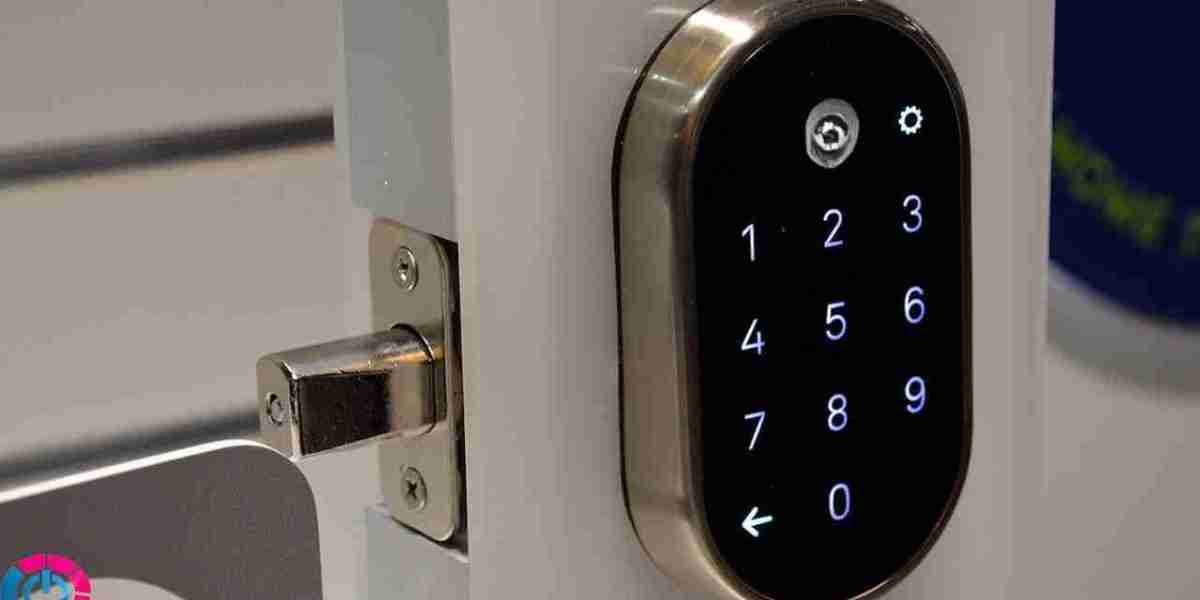The electronic locks market is rapidly growing, driven by increasing demand for smart security solutions across residential, commercial, and industrial sectors. As technology continues to advance, the market has become intensely competitive, with numerous global and regional players vying for market share. This competition analysis explores the landscape of the electronic locks market, focusing on major players, competitive strategies, market segmentation, and factors influencing brand positioning.
Market Overview and Key Segments
Electronic locks are a cornerstone of modern access control systems, offering enhanced security, convenience, and remote management. These locks are available in various formats including biometric, keypad, RFID, Bluetooth, and Wi-Fi-enabled variants. The market can be segmented based on:
Product Type: Deadbolts, cylindrical locks, lever handles, and padlocks
Technology: Biometric, RFID, Bluetooth, Wi-Fi, and smartphone-enabled systems
End-Use: Residential, commercial, institutional, and industrial
Each segment represents a battleground for companies to gain a competitive edge, depending on user preferences, technological integration, and application scope.
Leading Competitors in the Market
The electronic locks market is led by several well-established global brands that have built a strong presence through product innovation, brand reputation, and strategic distribution. Key players include:
Assa Abloy: A market leader known for brands like Yale and HID Global, Assa Abloy has a diverse product portfolio and a global footprint.
Allegion: With Schlage under its umbrella, Allegion focuses heavily on residential and commercial electronic locks, particularly in North America.
dormakaba Group: Based in Switzerland, dormakaba offers integrated access solutions, including electronic door locks, and has a solid presence in Europe and Asia.
Spectrum Brands Holdings: Through Kwikset and Baldwin, Spectrum has a strong consumer base and a wide product range suited for smart homes.
SALTO Systems: A growing force in electronic access control, SALTO specializes in wireless, keyless locking systems, especially in commercial and institutional settings.
Additionally, tech-driven brands such as August Home, SimpliSafe, and Nuki are gaining traction by offering highly connected, mobile-friendly smart lock solutions targeting tech-savvy consumers.
Strategies for Gaining Competitive Advantage
In this competitive market, companies are adopting a variety of strategies to stand out:
Product Differentiation: Brands are investing in R&D to develop smarter, more secure, and user-friendly locks. Features like biometric access, voice command compatibility, and geofencing are becoming common.
Strategic Partnerships: Collaborations with tech companies, smart home platform providers, and real estate developers are helping expand product adoption and reach new customer segments.
Geographic Expansion: Companies are targeting emerging markets such as India, Southeast Asia, and Latin America, where urbanization and smart city initiatives are driving demand.
Ecosystem Integration: Integration with IoT ecosystems like Apple HomeKit, Google Nest, and Amazon Alexa is a major selling point for consumers seeking seamless smart home experiences.
Brand Trust and Reliability: Given the importance of security, brand reputation plays a critical role in customer decisions. Players with long-standing market presence tend to hold a competitive advantage.
Competitive Dynamics and Market Positioning
The competition is also shaped by how brands position themselves. Premium brands emphasize durability, design, and advanced features, targeting high-end residential and enterprise-level customers. On the other hand, value-oriented brands offer budget-friendly locks with essential features to attract price-sensitive users.
Companies are increasingly offering subscription-based cloud services for access management, particularly for commercial clients. This service-based model not only creates recurring revenue but also strengthens brand loyalty.
The market is witnessing an influx of startups and niche players, particularly in the smart lock subsegment. These new entrants often focus on innovation, user experience, and aggressive pricing to disrupt the status quo. While they may lack global distribution, they appeal to younger consumers and early tech adopters.
Challenges Within Competitive Landscape
Despite the growth, competition in the electronic locks market comes with challenges:
Rapid Technological Changes: Keeping up with fast-evolving tech trends requires continuous innovation and investment.
Cybersecurity Risks: As locks become connected, protecting against hacking and data breaches is crucial for maintaining customer trust.
Standardization Issues: Lack of uniform standards across platforms can hinder integration and product compatibility.
High Market Saturation: In developed regions, the market is becoming crowded, making it difficult for new players to gain traction without unique value propositions.
Outlook for Competitive Environment
Looking ahead, the competition in the electronic locks market is expected to intensify. Companies that focus on smart technology, user experience, and secure, scalable solutions will continue to lead. Brand collaborations with construction firms, smart city projects, and hospitality chains will further shape market dynamics.
As digital lifestyles become more prevalent, consumer demand will shift toward locks that offer flexibility, customization, and remote access. This shift provides both opportunities and pressure for brands to adapt quickly and deliver innovative, secure solutions.
Conclusion
The electronic locks market is a vibrant, fast-moving sector with strong competition among established giants and agile newcomers. Companies must remain agile, embrace emerging technologies, and focus on trust and security to succeed. Strategic innovation, smart partnerships, and a focus on user-centric features will be essential for winning in this evolving and competitive industry.




